By Belen Fodde, 8/1/2023.
I was very lucky to come to India with an India China Institute grant with the purpose of enriching my dissertation research, as well as expand my knowledge and understanding of Indian cities. My dissertation looks at food governance and security in one informal settlement in my hometown, Buenos Aires. And even though India and Argentina are geographically far, we do share some of the same challenges in terms or urbanization and social policy. This is why exploring food access in India is so enriching to my research.
My first stop was Bangalore, where I stayed for two weeks as I met with researchers from the Indian Institute for Human Settlements (IIHS) – an experience I will talk about in another post. But being there for a substantive number of days allowed me to go through some adjustment to my first time in India and explore different areas of the city in every transportation mode possible: rickshaw, metro, taxi, and walking. And I want to share some of my impressions and experiences about the topic that’s taking most of my thinking time: food!
The first thing I would like to mention is how impressed I was by the lively street life in Bangalore (and in India, more in general). Even though I’m used to street vendors and merchants, I was amazed by the variety of products sold in the streets, particularly food. And I was equally interested in seeing so many people eating in stands, just standing or sitting on the sidewalk, very quickly to go back to work. In addition to the already cooked food, I also enjoyed carts selling fruit, vegetables, and water practically in every neighborhood.
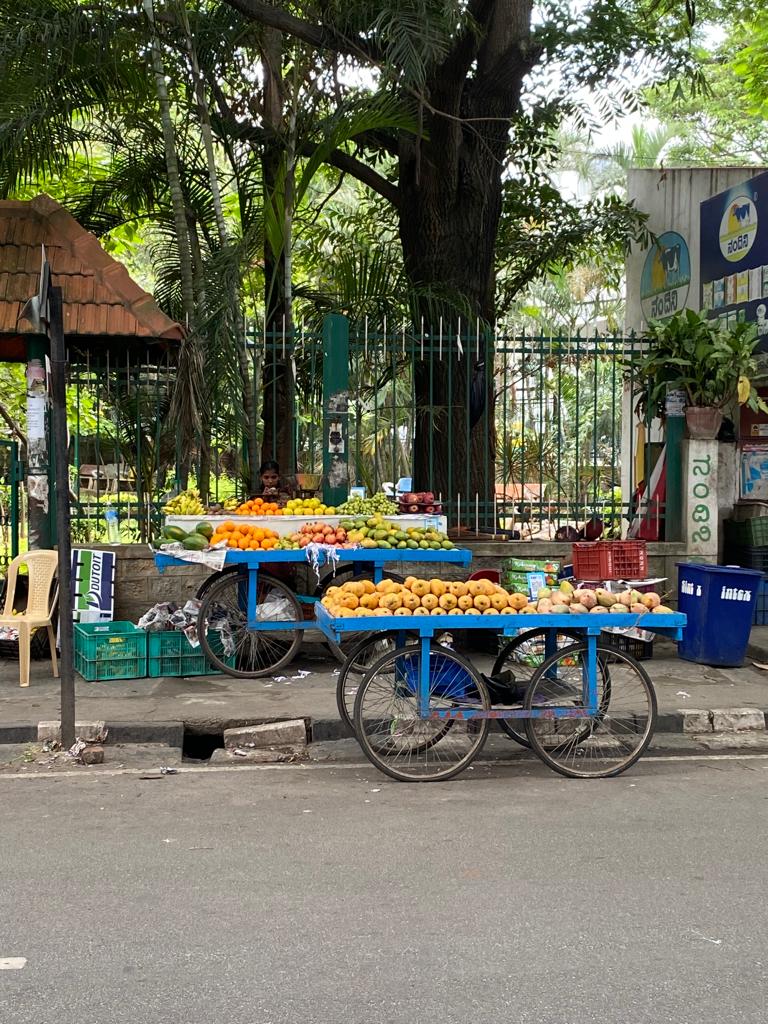
What I was mostly interested in seeing was how working-class people manage to access food, and what are some of the policies and mechanisms in place in Karnataka to make quality food more affordable. And this is what I will be writing about in this post, particularly about two state subsidized programs. Thanks to a really good suggestion from Jagdish Krishnaswamy from IIHS, I decided to try out the food at an Indira Canteen. Indira Canteens is a food subsidization program in the state of Karnataka, that aims at providing good quality food to workers, migrants, and low-income population. A similar program, called Amma Unavagam exists in the state of Tamil Nadu, and this was the model the administration of Siddaramaiah followed to create the program in Karnataka. Indira Canteens was launched in 2017 and is now part of the welfare programs focusing on food security, even though there has been a reduction in the number of canteens in the past few years.
I visited the Indira Canteen of Millers Rd in Vasanth Nagar, and the dynamics at the canteen were very interesting to see. This was a rather small place, where you would walk in, step in line, and then ask for the meal you wanted to have (there were two options, and you could add curry). At the entrance of the canteen there was a sign with the options offered on each day. Given my language limitations I ate what was offered to me 😊 and I can’t complain. The canteen had some communal tables inside, as well as some smaller ones on the outside. People were eating everywhere and the same as with eating from stands, they did it pretty quickly to go back to work.
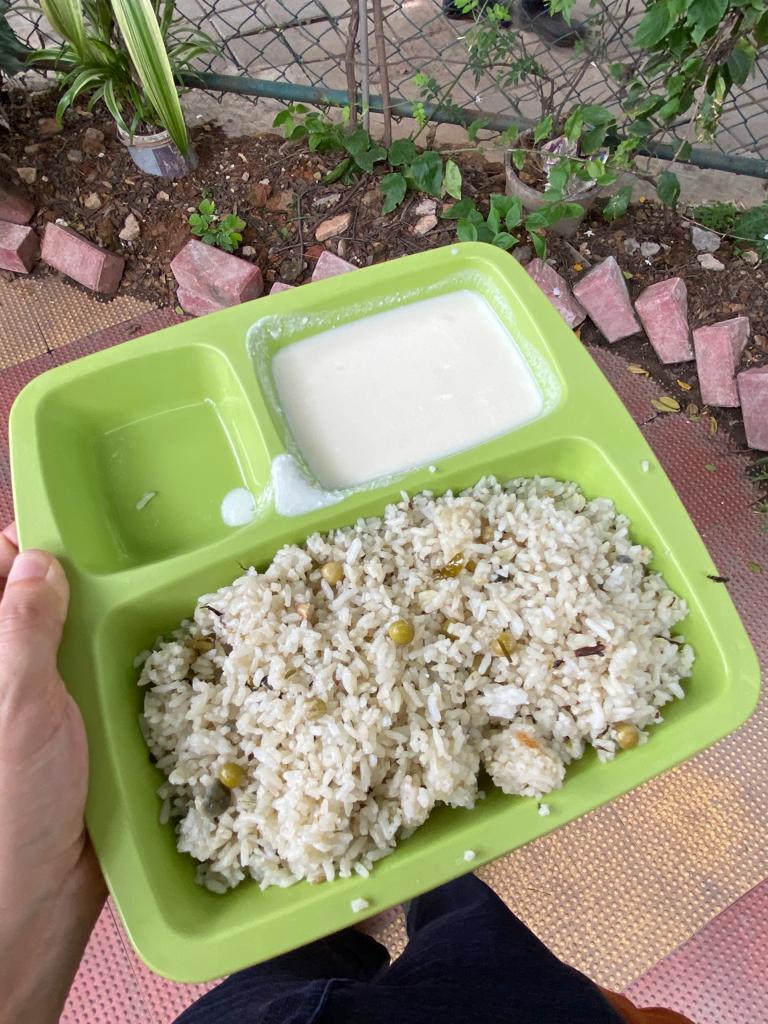
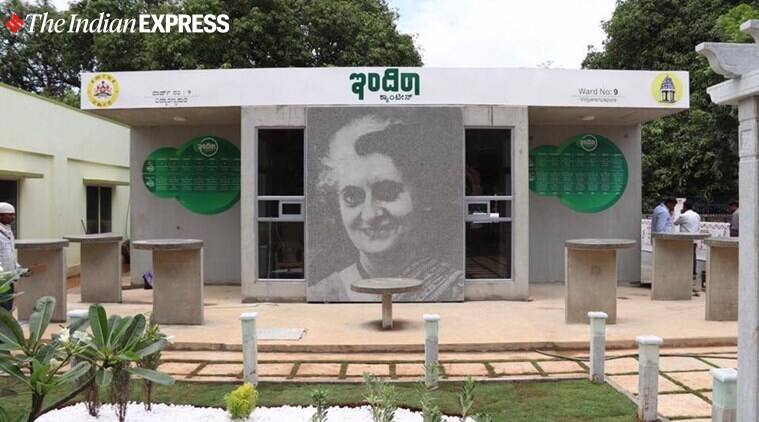
The Indira Canteens program is currently going under some changes and adjustments, such as modifying the menu and the funding scheme. Prices are not expected to change, but an improvement in the quantity and the quality of the food would be desirable. And one of the most important things is the expansion of the network to get to 250 canteens, one in each ward of the city. Their relevance has been documented by several academic papers, which emphasize the significant contributions these community spaces make to the food security of Bangalore, as they are a complement to the Public Distribution System of food.
While doing research on Indira Canteens, it was interesting to me to find out that while I was in Bangalore, there were some issues with the administration of the canteens. The Deputy Chief Minister of Karnataka, D.K. Shivakumar, visited an Indira Canteen without previous notice to have breakfast together with his team. While they were eating, he asked a customer next to him how much he had paid for his meal. The man said R10, but the government’s rate for these breakfast meals is R5. In the Indira Canteen of Millers Rd they charged me R10 for lunch, the rate fixed by the government.
The other program doesn’t focus on cooked foods, but on fruits and vegetables. While in Bangalore, I stayed at an Airbnb that was one block away from a HOPCOMS store. HOPCOMS stands for Horticultural Producer’s Co-operative Marketing and Processing Society Ltd., a program launched in 1959 in the state of Karnataka with the purpose of establishing a system for the marketing of fruits and vegetables. The program has several objectives, such as ensuring quality supply of fruits and vegetables at affordable prices, ensuring remunerative prices to producers, promoting the development of horticulture, and freeing consumers and producers from the control of middlemen. There are over 200 retail outlets in the areas of Bangalore Urban, Bangalore Rural, Kolar, Ramanagaram and Chikkaballapur, and at least in Bangalore Urban, you can see them in all neighborhoods. HOPCOMS is also working in other areas of Karnataka such as Kolar, Mysore, Tumkur, Mandya and Mangalore.
The store was located next to a dairy store and had a huge variety of fruits and vegetables, which made it very easy for customers to get staples. I even found vegetables I had never seen before, such as a bitter gourd. They had a lot of variety, good quality, and the prices were affordable. Recently, HOPCOMS became part of the Open Network for Digital Commerce (ONDC) to deliver their products to the consumers’ doorsteps. But sadly not everything is good news: HOPCOMS retail shops are declining, due to several challenges (such as street and mobile vendors selling products at a lower price) and even though the government says they’re supporting them, their sustainability is currently jeopardized.
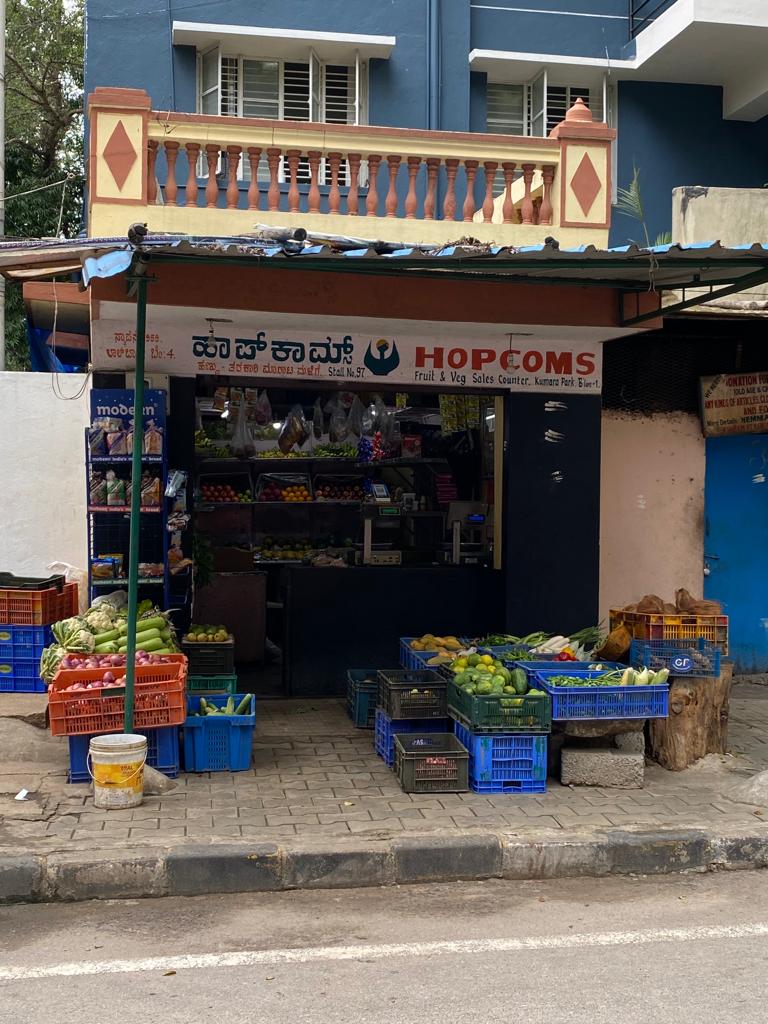
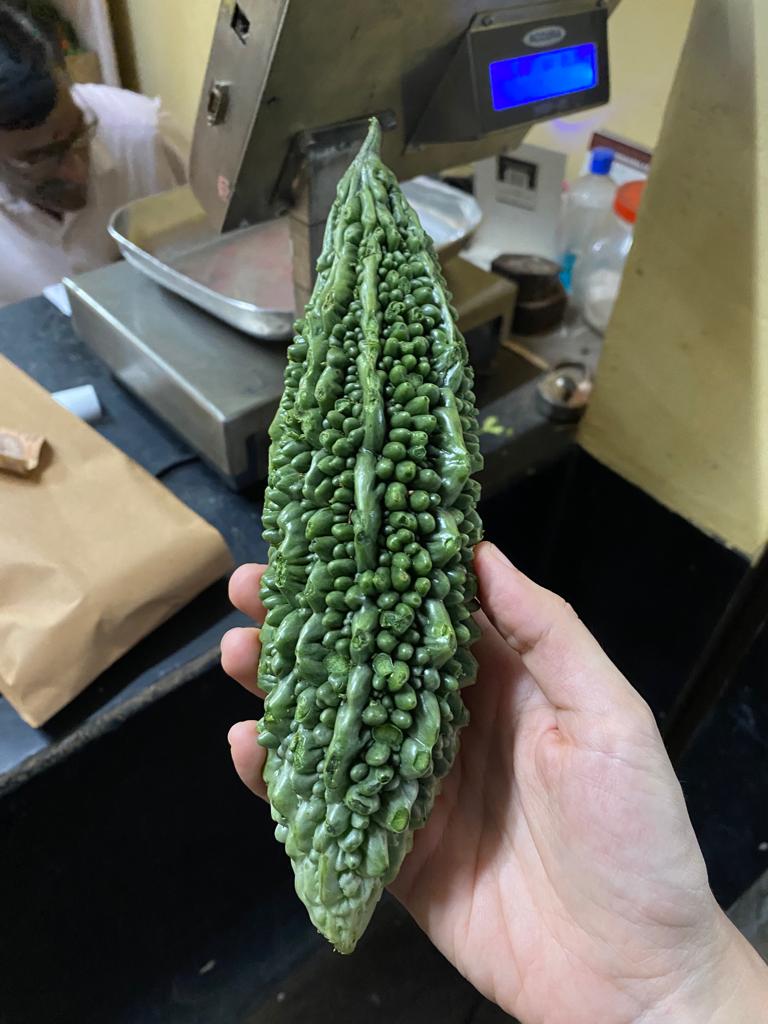
All in all, Bangalore has a lot to explore in relation to food access. I wanted to present some of the subsidized programs that contribute to food security- but it is worth remembering that there are a lot of options to have really good food, covering the entire price spectrum.
